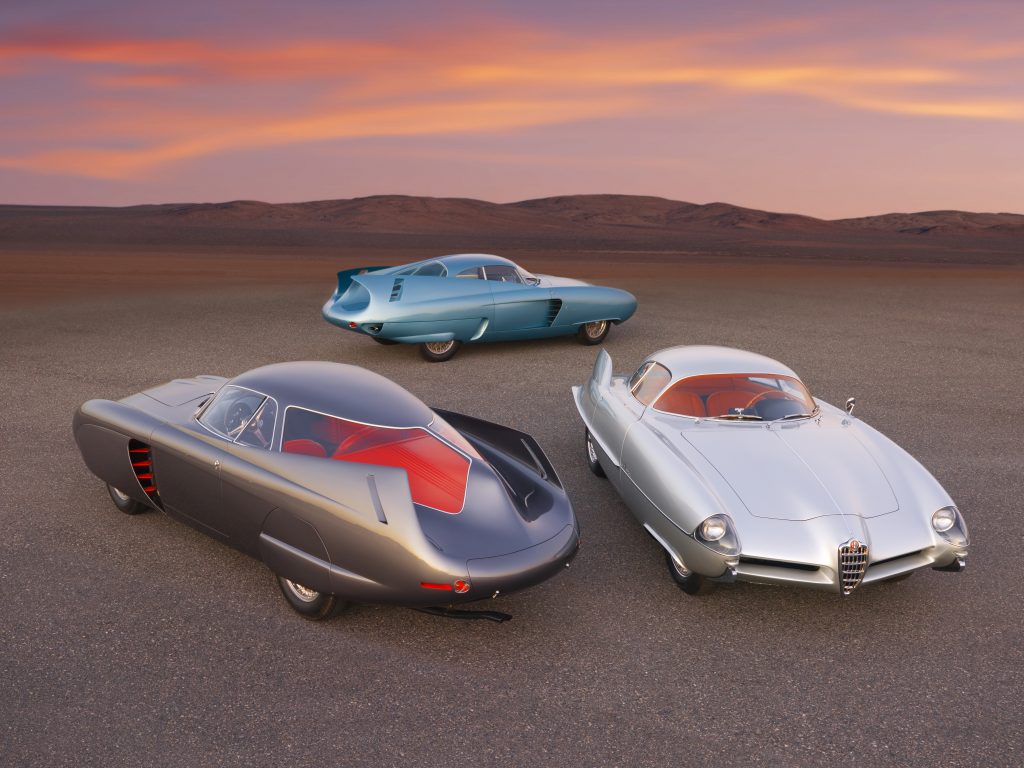Fourteen million eight hundred forty thousand U.S. dollars. That was the amount of money spent on a trio of Alfa Romeo cars this past Wednesday, October 28, 2020, when the hammer fell at the RM Sotheby’s auction house.
These Alfa Romeo cars are unlike the ones you may know. These are not famous cars, such as the historic, championship-winning “Alfetta” Formula One single-seaters from 1950-51; the 1967 Alfa Romeo 33 Stradale, arguably the most beautiful Alfa road car ever built; or even the carbon fiber, hybrid-powered, 200-mph track rockets that the Alfa Romeo Racing ORLEN team currently campaigns in the Formula One World Championship.
No, these three rolling sculptures are all concept cars that were produced between 1953-55. And they all go by a special acronym.
The B.A.T. concepts
Berlinetta Aerodinamica Tecnica (B.A.T.), which loosely translates to “coupe aerodynamics technique,” refers to the Skunk Works project Alfa Romeo commissioned with Italian coachbuilder Nuccio Bertone and designer Franco Scaglione in the early 1950s to explore the technical aspects of aerodynamics in automobiles. Bertone and Scaglione wanted to show that the era’s trend of streamlined design was about more than just cars that looked sleek and swoopy; it was also about the science and approaching aerodynamics from a technical point of view.
As the starting point for the project, Bertone selected the platform from the Alfa Romeo 1900, a midsize sedan that debuted in 1950 and featured smooth lines, an integrated body and chassis and room for six people. Tagged with the slogan, “The family sedan that wins races,” the 1900 was a force on the racetrack, dominating the Gran Tourism Class with its TI (Turismo Internazionale) and Super TI versions.
Using this proven platform with a racing pedigree, Scaglione then took the reins. With his background in aeronautics, Scaglione went on to design three futuristic concept cars — B.A.T. 5, 7 and 9d — each with its own unique flair and, more importantly, seductive shape that pushed the limits of how sharply a car could slice through the wind.
Through the years, all three concepts have been driven on the road and exhibited at various car shows, including Rétromobile in Versailles, Centre International de l’Automobile in Paris and The Pebble Beach Concours d’Elegance in Pebble Beach, but only B.A.T. 7 participated in wheel-to-wheel racing, in SCCA competition in Southern California.
Shortly after Bertone received an honorary degree in 1989 from the ArtCenter College of Design in Pasadena, California, the three concepts were displayed together for the first time at the 1989 Pebble Beach Concours. Bertone made the trek up the California coast from Pasadena to attend Pebble, where he shared stories of the cars and of working with Scaglione. Prior to being auctioned by RM Sotheby’s, the B.A.T. concepts were held under private ownership in the United States.
B.A.T. 5
The first of the trio, B.A.T. 5 from 1953 is so named because it was the fifth and final full-scale model that Scaglione settled on for the initial concept. Riding on chassis number AR1900 01396, B.A.T. 5 made its debut at the 1953 Turin Auto Salon to much fanfare from both the public and automotive media, who were awestruck by the concept’s bulging pontoon fenders, teardrop cockpit and curved tail fins. At roughly 2,400 pounds, B.A.T. 5 was more than just a radical facade, analytical methods of the time estimated the drag coefficient to be roughly 0.23, sleek enough to return a top speed of almost 124 mph (2020 Giulia sedan has a drag coefficient of 0.28 and a top speed of 149 mph).
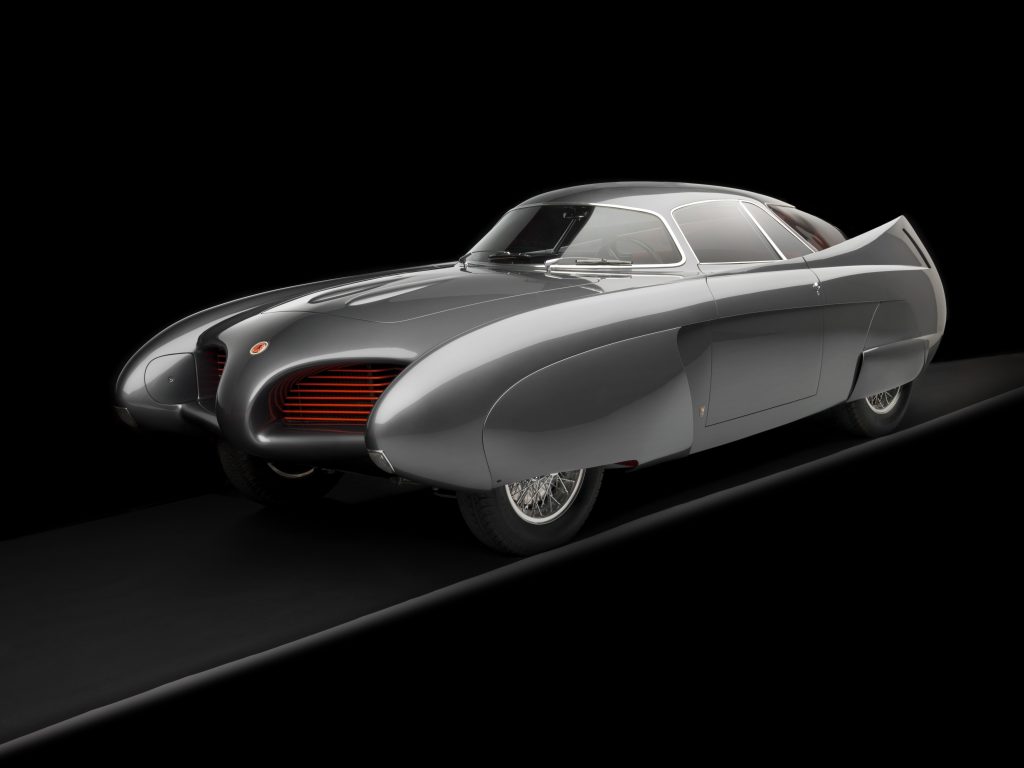
1953 Alfa Romeo Bertone B.A.T 5 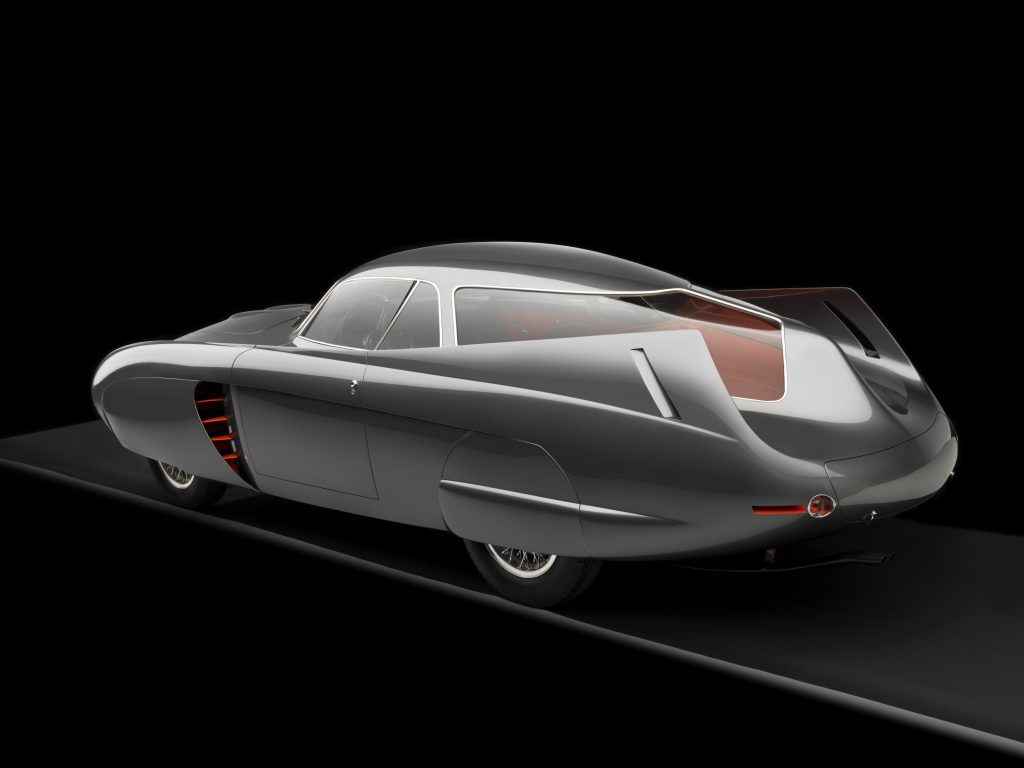
1953 Alfa Romeo Bertone B.A.T 5
B.A.T. 7
Emboldened to be more extreme with his follow-up concept, dubbed B.A.T. 7 on chassis number AR1900C 01485, Scaglione kept the 5’s side vents and rear wheel skirts, but lowered the 7’s hood by more than two inches, narrowed the front air intakes and lengthened the tail fins. The result was a lighter (2,200 pounds) and more aerodynamically slick (0.19 drag coefficient) concept that wowed onlookers at the following year’s Turin Auto Salon in 1954.
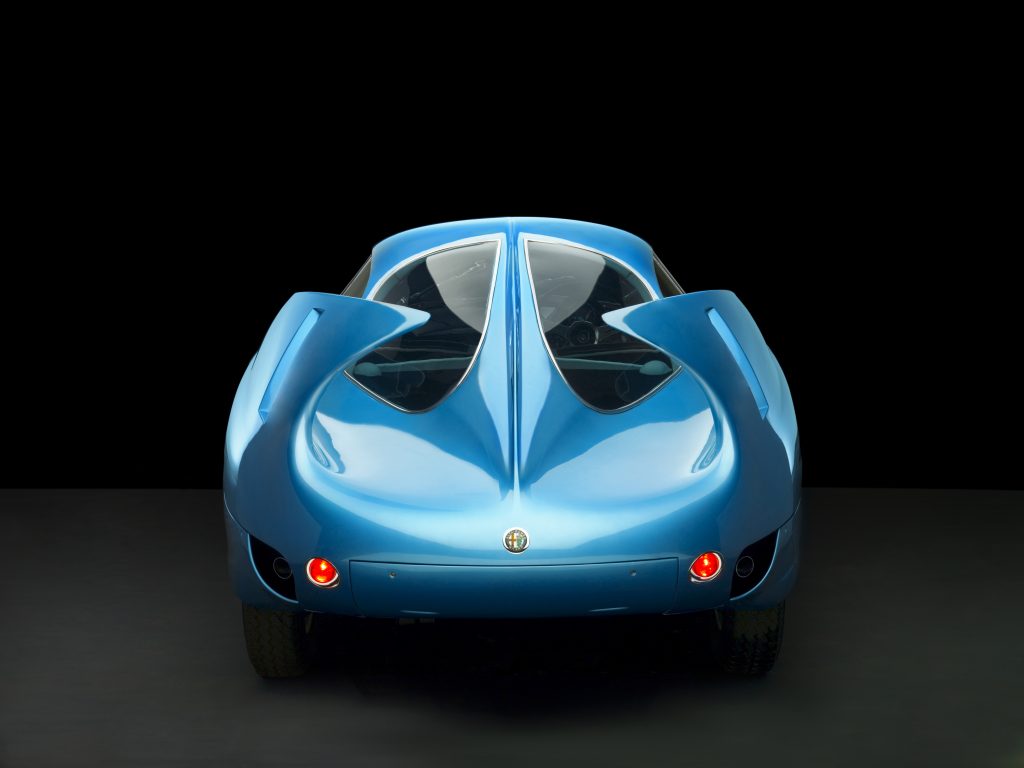
1954 Alfa Romeo Bertone B.A.T. 7 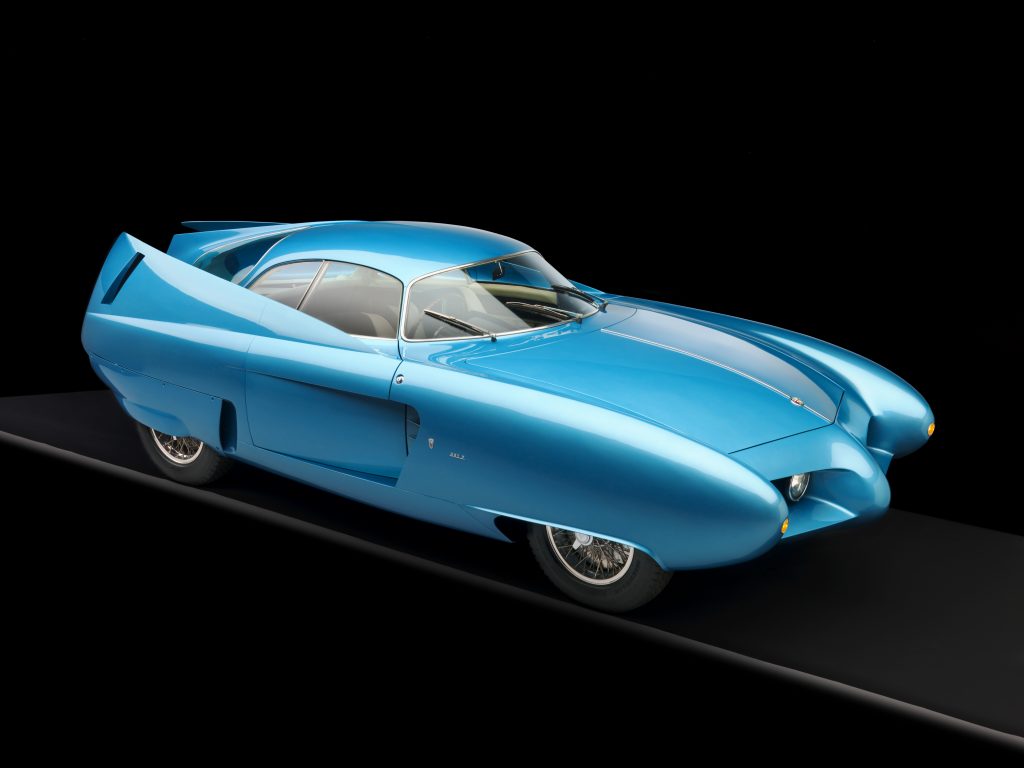
1954 Alfa Romeo Bertone B.A.T. 7
B.A.T. 9d
While the tendency might have been to make the third concept even more extreme and wild than the previous two, Alfa Romeo’s mandate to Bertone’s team was just the opposite: make it look more like a road car. Thus, for B.A.T. 9d, shown at the 1955 Turin Auto Salon, Scaglione shrunk the tail fins, ditched the rear wheel skirts and added cues more befitting a production car, such as a distinct beltline and a Scudetto triangular grille with Milano crest pulled right off a Giulietta. As with the 5 and 7, the 9d used the Alfa Romeo 1900 platform, in this case, chassis number AR1900 01600.
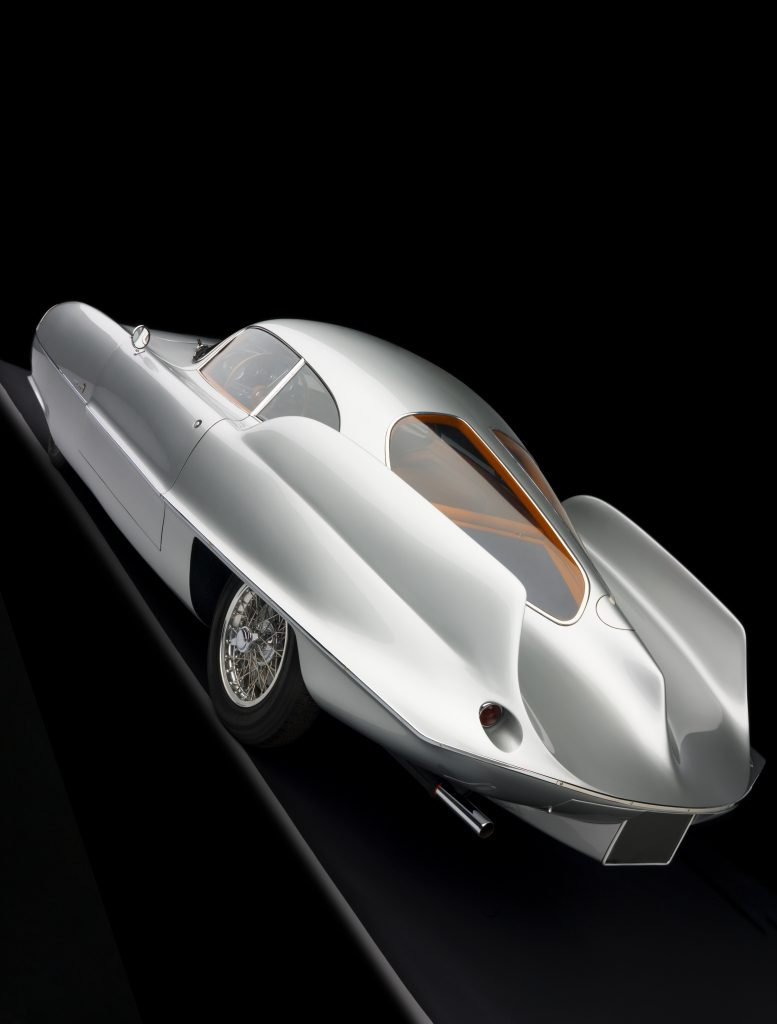
1955 Alfa Romeo Bertone B.A.T 9 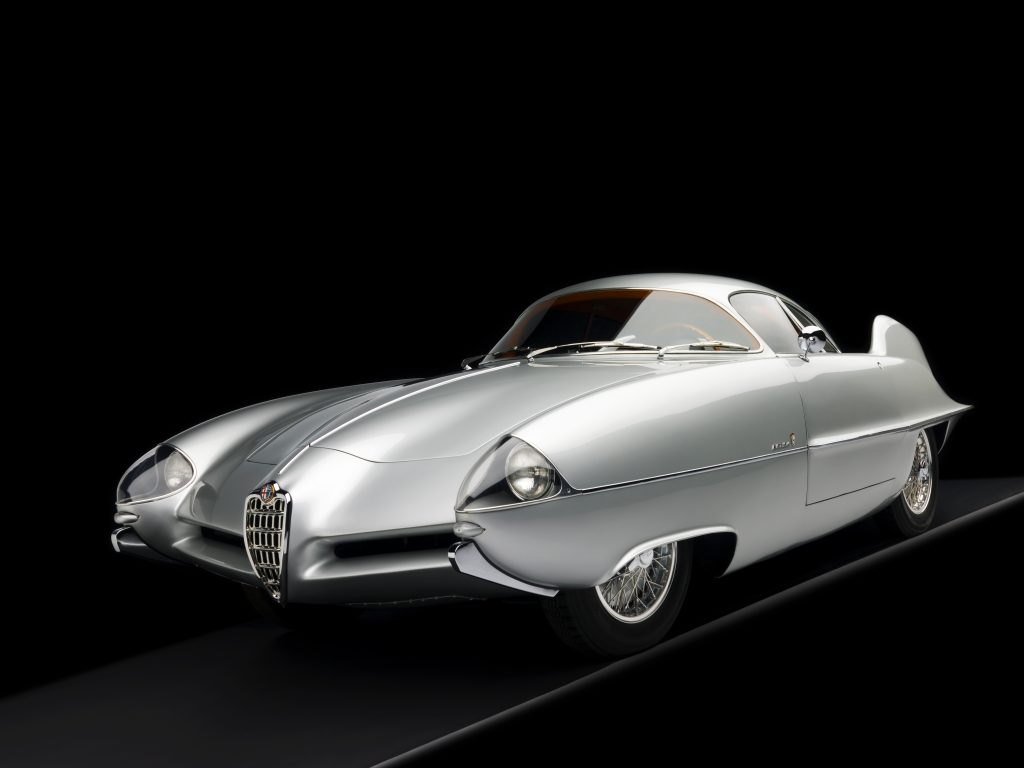
1955 Alfa Romeo Bertone B.A.T 9 Silver 3/4 Front View Studio



